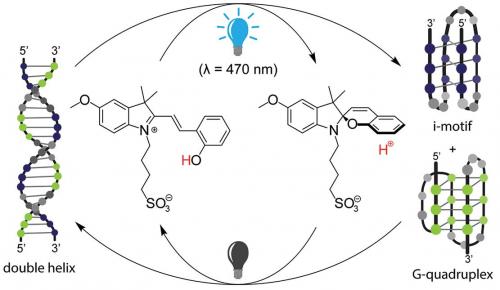DNA lies at the core of every biological system, most often in the form of a double helix. It can, however, adopt alternative three-dimensional conformations that fulfil regulatory functions such as in gene transcription. DNA’s versatility, programmability and robustness are increasingly being used to design stimuli-responsive materials or nanoscale devices with functions including capture and release. A recent study by researchers at the University of New South Wales has shown how light may be used to change the 3D structure of short DNA strands (Wimberger L., Rizzuto F.J., Beves J.E. J. Am. Chem. Soc. 2023, 145, 2088–92). Being able to control such structures with light allows high spatiotemporal resolution and avoids waste. The method used a small molecule, a photoacid, to reversibly control the pH, leading to the structural change of the DNA. This shape-shifting process was applied to several unmodified DNA sequences of varying lengths and pH sensitivity. The recovery process after light irradiation and the species distribution could be tuned by adjusting the initial pH and by introducing a DNA binder. Using small molecules to change the 3D conformation of DNA with light may advance the development of functional DNA devices and lead to more sophisticated light-responsive materials.


The Royal Australian Chemical Institute's magazine for and about the chemical science professions

